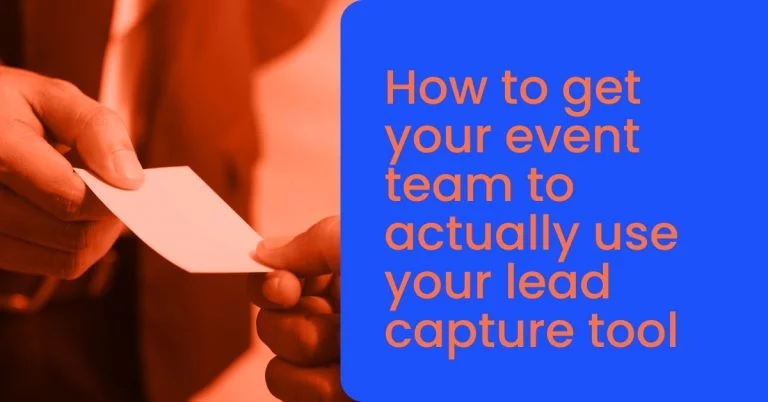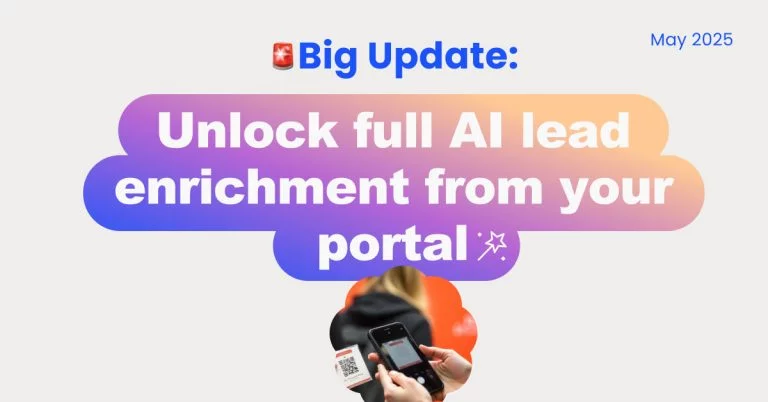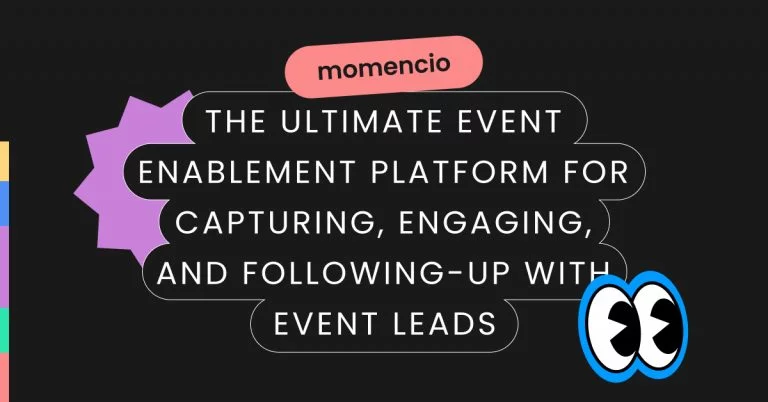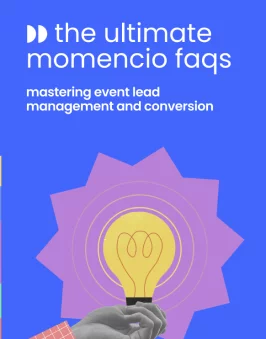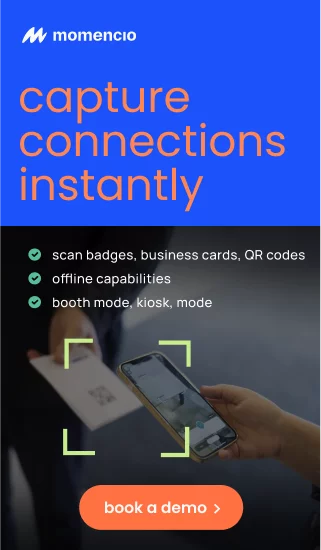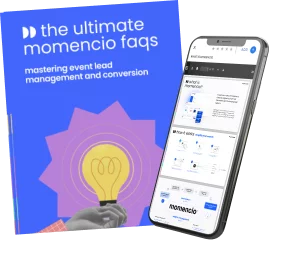The future of trade shows isn’t just about bigger booths or better giveaways—it’s about sustainability. As the global movement toward environmental responsibility intensifies, trade shows in the USA are seeing a shift. Exhibitors and organizers are increasingly focused on minimizing their environmental impact without sacrificing the excitement and innovation that makes in-person and hybrid events so compelling.
A single trade show can generate mountains of waste—from printed materials to disposable booth setups—and consume vast amounts of energy, from transportation to venue power usage. According to a report, the average trade show attendee produces over 1.89 kilograms of waste per day, and that is not including the massive carbon footprint generated by travel and logistics.
Sustainability is not about cutting corners or limiting the potential of your event. Quite the opposite. It’s about using innovative, eco-friendly strategies to deliver memorable, impactful trade show experiences that align with modern values. And let’s be honest—sustainability isn’t just a buzzword anymore; it’s an expectation. 75% of millennials are willing to pay more for sustainable products, and that mindset is reflected in how they engage with brands at events.
This article will guide you through the best practices and innovative strategies for embracing sustainable exhibiting at trade shows in the USA. From smarter booth designs to eco-friendly materials, we’ll cover everything you need to know to make your next event greener without compromising on impact.
Understanding the environmental impact of trade shows in the USA
Trade shows in the USA are powerful engines for business growth, networking, and product showcasing, but they come with a hidden cost: their environmental impact. While the excitement of in-person and hybrid events is undeniable, the logistics behind setting up these massive gatherings often result in significant waste and resource consumption. From single-use booth materials to the energy demands of lighting, transportation, and catering, the ecological footprint of a single trade show can be staggering.
The events industry council estimates that the global events industry generates over 300 million tons of CO2 emissions annually, with much of that coming from transportation and energy usage at large-scale events like trade shows in the USA.
The main culprits of environmental impact
- Material waste: Exhibitors at trade shows often use temporary displays, signage, and printed materials. These items, while visually appealing, are typically designed for short-term use and are often discarded after the event. The sheer volume of these materials can contribute to significant waste. On average, trade shows in the USA generate over 600,000 pounds of waste, much of which ends up in landfills.
- Energy consumption: Venues hosting trade shows consume vast amounts of electricity to power everything from air conditioning to lighting, booth setups, and interactive displays. The larger the venue, the more energy required to sustain operations, and much of this energy comes from non-renewable sources.
- Transportation and carbon emissions: The carbon footprint of trade shows in the USA is also exacerbated by the transportation involved. Whether it is exhibitors shipping booth materials or attendees flying across the country, trade shows require a significant amount of fuel and resources. A single cross-country flight can produce over 1,000 pounds of CO2 per passenger, contributing to the overall environmental burden.
- Food and beverage waste: Catering services at trade shows, particularly large trade shows in the USA, often result in excessive food waste. Without proper planning or sustainability measures, the disposal of uneaten food and single-use plastics further adds to the ecological strain.
However, acknowledging these impacts is the first step toward a solution. Exhibitors, organizers, and even attendees now have the opportunity to embrace sustainable exhibiting practices that not only reduce environmental harm but also enhance the overall experience. In the next section, we will explore these strategies and how they can be seamlessly integrated into trade shows without sacrificing the event’s effectiveness or excitement.
Key strategies for sustainable exhibiting at trade shows in the USA
Now that we understand the environmental impact of trade shows in the USA, it is time to focus on what exhibitors can do to minimize their footprint. The good news is that sustainable exhibiting is not only achievable but also cost-effective in the long term. Implementing eco-friendly strategies at trade shows in the USA can enhance your brand’s reputation while contributing to global sustainability goals.
1. Sustainable booth design and materials
One of the most impactful ways exhibitors can embrace sustainability is by rethinking booth design. The traditional approach of building elaborate booths for single use has become outdated in the face of modern, eco-conscious alternatives.
- Reusable and modular booths: Rather than constructing a new booth for each trade show, exhibitors can invest in reusable modular booth designs. These booths are built with sustainability in mind, using durable, eco-friendly materials like aluminum, recycled plastic, or sustainably sourced wood. Modular designs also offer flexibility, allowing you to reconfigure the setup for different events, reducing the need for wasteful custom builds.
- Eco-friendly materials: When selecting materials for booths, prioritize those that are recyclable, biodegradable, or made from renewable resources. For example, fabric displays made from recycled polyester, signage printed on FSC-certified paper, and flooring made from recycled materials are all excellent options.
- Low-VOC paints and adhesives: Many traditional paints and adhesives used in booth construction release volatile organic compounds (VOCs), which contribute to indoor air pollution. Opting for low-VOC or VOC-free products can improve air quality and reduce the booth’s overall environmental impact.
2. Energy-efficient lighting and technology
Trade show booths are often energy-intensive, with large screens, bright lights, and interactive displays requiring constant power. However, technology is also where exhibitors can make significant strides toward sustainability.
- LED lighting: Switching to LED lighting is one of the easiest ways to reduce energy consumption at trade shows in the USA. LEDs use up to 75% less energy than traditional incandescent or halogen lights and last significantly longer, reducing both energy costs and the frequency of replacements.
- Solar-powered displays: Exhibitors can go a step further by integrating solar-powered technologies into their booths. Portable solar panels can power small displays, tablets, or lighting, making your booth self-sustaining and reducing reliance on the venue’s energy grid.
- Digital displays over printed materials: Instead of handing out printed brochures and flyers, use digital displays and QR codes to share information with attendees. Not only does this reduce paper waste, but it also allows for more dynamic and interactive presentations. Attendees can access product information directly on their smartphones, which they are more likely to keep and refer to later.
3. Green transportation and logistics
Transportation is a significant contributor to the carbon footprint of trade shows, from shipping booth materials to flying staff and products to the venue. However, exhibitors can take proactive steps to reduce this impact.
- Local sourcing of materials: Whenever possible, source booth materials and products locally. This reduces the carbon emissions associated with long-distance shipping. Additionally, partnering with local vendors supports the community and often results in faster, more reliable delivery.
- Freight consolidation: If shipping materials is unavoidable, look into freight consolidation options. By sharing shipping containers or trucks with other exhibitors, you can reduce the number of shipments needed, cutting down on transportation-related emissions.
- Encouraging green travel for staff: Encourage staff members to use eco-friendly transportation options such as trains, carpools, or electric vehicles when traveling to trade shows in the USA. For longer distances, consider offsetting the carbon emissions of flights by investing in carbon offset programs.
4. Reducing paper and promotional material waste
Traditional trade shows are notorious for generating excessive amounts of paper waste. From printed brochures to business cards, these materials often end up in the trash at the end of the event. By adopting more sustainable alternatives, exhibitors can significantly reduce their paper waste.
- Digital content collateral: As mentioned earlier, transitioning to digital content materials is an excellent way to cut down on waste. Use QR codes, NFC technology, or apps to share brochures, product information, and contact details digitally. This not only eliminates the need for printed materials but also ensures attendees have easy access to your information long after the event.
- Eco-friendly promotional items: If you choose to give away promotional items, select eco-friendly products that are useful and made from sustainable materials. Consider items like reusable water bottles, bamboo pens, or seed paper that attendees can plant after the event. These items are not only practical but also reinforce your commitment to sustainability.
By implementing these strategies, exhibitors can drastically reduce their environmental impact while still delivering a memorable experience at trade shows in the USA. Sustainable exhibiting is about more than just meeting regulatory standards—it is about leading by example, showing that your brand cares about the future, and engaging with consumers who share those values.
Best practices for vendors and exhibitors to embrace sustainability at trade shows in the USA
Sustainability is no longer a secondary concern for vendors and exhibitors; it is becoming central to how brands present themselves at trade shows in the USA. With attendees increasingly valuing eco-conscious companies, exhibitors who embrace sustainable practices can strengthen their brand reputation while reducing their environmental impact. Let us explore some of the best practices for vendors to integrate sustainability into their trade show strategy.
-
Choose eco-friendly giveaways and merchandise
Promotional items are a staple of trade shows, but they often contribute significantly to waste, with many giveaways ending up in the trash by the end of the event. To align with sustainable goals, vendors should opt for eco-friendly alternatives that attendees can actually use.
- Reusable items: Instead of plastic pens or single-use items, consider giving away reusable products such as stainless steel water bottles, tote bags made from recycled materials, or bamboo utensils. These items not only reduce waste but also promote daily reuse, keeping your brand top of mind for attendees.
- Sustainably sourced materials: When selecting merchandise, ensure that the products are made from environmentally friendly materials. Items made from organic cotton, recycled plastics, or biodegradable components send a strong message about your commitment to sustainability.
- Practical and Ethical Products: Offering practical items like eco-friendly notebooks, solar-powered chargers, or items made by fair-trade companies provides value to attendees while promoting ethical business practices. These items tend to have longer lifespans, reducing the likelihood of being discarded.
-
Use digital tools for marketing and engagement
Going digital is not just about convenience—it is a major step toward reducing the environmental footprint of your booth. By minimizing paper usage and opting for digital alternatives, vendors can both engage attendees more effectively and demonstrate their eco-conscious values.
- Digital brochures and catalogs: Replace traditional printed brochures with digital versions. Set up tablets or touchscreens at your booth where attendees can browse product information, services, or company history. You can also offer to email digital brochures directly to attendees, reducing paper waste and providing them with information that is easily accessible on their devices.
- QR codes for engagement: QR codes can serve as a powerful tool to reduce printed materials. Place them prominently at your booth to allow attendees to scan and instantly access your website, product demos, or virtual business cards. This seamless exchange of information eliminates the need for printed handouts.
- Event apps for networking: Many trade shows in the USA now have event-specific apps designed to facilitate networking and engagement. These apps often feature tools for sharing contact details, booking appointments, and accessing exhibitor information without the need for physical materials.
-
Partner with sustainable vendors and suppliers
Sustainability goes beyond your booth—it extends to the vendors and suppliers you choose to work with. Exhibitors can reduce their overall environmental impact by aligning with partners who share their commitment to eco-friendly practices.
- Choose local suppliers: Sourcing locally for booth materials, products, or even food and beverages can significantly reduce your carbon footprint by minimizing transportation emissions. Moreover, local suppliers are often more flexible and can provide quicker turnarounds, reducing logistical challenges.
- Work with green-certified vendors: When choosing partners for booth construction, signage, or printing, prioritize vendors with sustainability certifications. Look for suppliers that are LEED-certified, use recycled materials, or employ energy-efficient processes. These partnerships reinforce your brand’s dedication to sustainability while ensuring that your booth is constructed in an eco-friendly manner.
- Sustainable catering choices: If your trade show booth offers refreshments or food, consider partnering with catering services that use organic, locally sourced ingredients and avoid single-use plastics. Offering plant-based options and eliminating disposable cutlery or plates can significantly reduce waste.
-
Incorporate interactive technology to reduce physical waste
Incorporating interactive technology into your booth not only enhances attendee engagement but also eliminates the need for excessive promotional materials or physical displays.
- Virtual product demos: Instead of shipping multiple products or creating large physical displays, opt for virtual product demos. Using tablets, touchscreens, or virtual reality (VR) technology, you can provide a fully immersive experience that allows attendees to explore your offerings without the environmental cost of manufacturing or transporting physical products.
- Gamified engagement: Use gamification to make your booth more interactive while reducing the need for giveaways. Interactive quizzes, digital prize wheels, or eco-themed games can attract attendees to your booth without generating waste. You can offer digital prizes or eco-friendly rewards, such as donations to environmental causes on behalf of participants.
- Real-time data collection: Implement digital tools for lead capture, such as badge scanning or event apps that allow attendees to exchange contact information with a tap. This reduces the need for paper forms and business cards, making your lead collection process not only more efficient but also more sustainable.
-
Educate and engage attendees on sustainability
Finally, exhibitors can play a pivotal role in promoting sustainability at trade shows in the USA by engaging attendees on the topic. By showcasing your own efforts and educating others, you position your brand as a leader in the eco-conscious movement.
- Share your sustainability story: Clearly communicate your commitment to sustainability at your booth. Use signage, digital displays, or even personal interactions to share how your company is reducing its environmental impact. Highlight specific actions you are taking, such as using recycled materials or offsetting carbon emissions from travel.
- Offer educational content: Create opportunities for attendees to learn more about sustainable practices. You can provide educational materials on how to reduce personal or business environmental impact, or host mini-sessions at your booth where attendees can learn about eco-friendly innovations in your industry.
- Support sustainable causes: Another effective way to engage attendees is by aligning with sustainability-focused causes. For example, you can pledge to plant a tree for every business card scanned or donate a portion of your sales to an environmental charity. These initiatives not only promote sustainability but also encourage attendees to participate in meaningful ways.
10 ways trade show organizers can Drive eco-friendly practices
Sustainability is no longer an option—it is the expectation. The event industry is facing a fundamental shift, and trade show organizers in the USA have a unique opportunity to lead this change. Creating eco-friendly trade shows not only reduces environmental impact but also builds a reputation for forward-thinking innovation. Let us break down 10 game-changing ways organizers can set the standard for sustainable trade shows.
1. Embrace zero-waste initiatives
Zero-waste is the future of events. From the moment your event begins, the goal should be simple: leave no trace. This means cutting down on single-use items, partnering with waste management teams for comprehensive recycling and composting, and encouraging exhibitors to go paperless. Zero-waste is not just good for the planet; it makes your event stand out as a leader in sustainability.
2. Carbon-neutral trade shows are the new standard
Carbon neutrality is not a distant goal—it is happening now. Calculate your event’s carbon footprint and neutralize it through carbon offsets. This is not a ‘nice to have’ anymore; it is what stakeholders, attendees, and exhibitors expect. You can fund renewable energy projects or reforestation initiatives to balance out emissions. Pair this with energy-efficient venues and eco-conscious transportation options to push your event toward real sustainability.
3. Go digital, cut paper
The days of handing out printed leaflets and brochures are over. Your attendees are already digital-savvy, so give them what they need—an event app that holds all the schedules, maps, and key information. Use digital lead capture systems to replace stacks of business cards. Not only will this reduce your environmental footprint, but it will also streamline the experience for your attendees. Think of it as paperless engagement in its finest form.
4. Power up with smart tech
Energy consumption at trade shows is massive, but smart energy management is your solution. Pick venues that use renewable energy or incorporate energy-efficient systems like LED lighting and motion-sensor technology. On the exhibitor side, encourage the use of solar-powered or battery-efficient technology for booths. Every watt counts.
5. Reward sustainable exhibitors
Sustainability cannot be top-down; exhibitors need to be on board too. Offer special incentives for exhibitors who embrace eco-friendly practices. Whether it is using recycled materials for booths or opting for interactive digital displays over printed collateral, make it worth their while. Publicly recognizing these exhibitors with green awards builds momentum and makes sustainability a competition everyone wants to win.
6. Rethink transportation
Transportation is one of the biggest sources of emissions at trade shows. As an organizer, you can mitigate this by offering green travel alternatives. Coordinate shuttles for exhibitors and attendees, or encourage the use of public transport by providing perks like discounted event tickets. Promote ride-sharing apps and incentivize carpooling to significantly lower the carbon footprint associated with travel.
7. Source local, stay sustainable
Your supply chain is as critical as any other aspect of the event. Sourcing materials locally is a game-changer. It reduces transportation emissions and supports local economies. Choose green-certified vendors who provide eco-friendly booth materials, signage, and even catering. Sustainable sourcing ensures that every aspect of your event reflects your commitment to reducing environmental impact.
8. Digital badges for seamless access
Badges are a staple of trade shows, but traditional plastic ones? Not so much anymore. Use digital badges that can be stored on smartphones or event apps, eliminating the need for plastic or printed badges altogether. It is a sustainable solution that also speeds up the check-in process—an immediate win for both sustainability and attendee experience.
9. Use tech to track sustainability in real time
One of the most powerful ways to enhance sustainability is through real-time event insights. Event tech solutions now offer analytics that allow organizers to monitor energy consumption, track attendee movement, and even measure the environmental impact of different areas of the show. Adjust heating, lighting, and air conditioning dynamically based on crowd density to cut down on unnecessary energy use.
10. Engage attendees in the mission
Finally, sustainability is not just the organizer’s job. Make attendees a part of the mission by promoting sustainable behavior throughout the event. Set up recycling stations, offer reusable water bottles, and encourage digital engagement over printed materials. Include sustainability initiatives as a core part of your event messaging, and watch as your audience takes pride in participating in a green event.
7 tips to improve sustainability at trade shows
The conversation around sustainability at trade shows in the USA is evolving. Basic practices like reducing paper waste and using energy-efficient lighting are no longer enough to meet the rising expectations of attendees, exhibitors, and industry leaders. The next phase of sustainability involves leveraging cutting-edge technologies, adopting new design philosophies, and implementing creative solutions that push beyond traditional eco-friendly practices.
Here are seven innovative approaches to improve sustainability at trade shows in the USA.
-
Circular economy booth design
A bold trend in event sustainability is embracing the circular economy—a system focused on reducing waste by ensuring that all materials and products are reused, repurposed, or recycled. In trade shows, this means designing booths and displays that can be dismantled and reused over and over, with minimal environmental impact.
- Modular and adaptable booth systems: Exhibitors are moving beyond traditional one-off booth designs. Modular systems allow exhibitors to reconfigure and adapt the same booth structure for different events, cutting down on material use and waste. This not only reduces costs but aligns with a long-term sustainability strategy.
- Closed-loop materials: Many companies are now using materials like biodegradable plastics or reclaimed wood that can either be returned to the earth after use or recycled into new booth components. These materials ensure that nothing ends up in a landfill after the event.
-
Augmented and virtual reality experiences
As technology evolves, so does the ability to reduce physical waste at trade shows in the USA through Augmented Reality (AR) and Virtual Reality (VR). These technologies allow exhibitors to create immersive experiences without the need for extensive physical materials or large, wasteful displays.
- VR product demonstrations: Instead of transporting large, complex products to trade shows, exhibitors can use VR to provide attendees with a fully immersive product experience. This drastically reduces shipping-related emissions while still delivering a memorable and engaging experience.
- AR interactive displays: Augmented reality allows exhibitors to showcase products and services in innovative ways. With AR apps, attendees can view products in 3D or receive additional layers of information by scanning specific items in the booth. This digital approach significantly reduces the need for printed materials and physical product samples.
-
Sustainable digital platforms and event tech
Today’s event technology is evolving into a key player in sustainability. Platforms that once focused solely on registration or lead capture are now offering features designed to reduce waste and improve the overall eco-friendliness of events.
- Carbon tracking tools: Some advanced platforms provide carbon tracking features, allowing organizers to monitor the carbon footprint of their event in real time. These platforms help calculate everything from venue energy use to the emissions generated by attendee travel, offering insights into how events can be optimized for sustainability.
- Data-driven sustainability improvements: Advanced event tech solutions allow organizers to gather real-time data on attendee behavior, energy usage, and waste generation during the event. These insights can be used to make on-the-spot adjustments, such as adjusting lighting or HVAC settings to optimize energy consumption, or even rethinking booth placements to streamline traffic flow and minimize energy use.
-
Biophilic design for trade show venues
Another innovative trend is biophilic design, which integrates natural elements into built environments to create spaces that are not only sustainable but also improve the well-being of attendees.
- Indoor greenery: Incorporating natural plants and greenery into trade show booths and venue design can reduce indoor air pollutants and create a more calming, refreshing atmosphere for attendees. Biophilic designs use plants as natural air filters, creating a healthier, more sustainable environment.
- Natural lighting and ventilation: Venues designed with biophilic principles in mind prioritize natural light and ventilation, reducing the need for artificial lighting and HVAC systems. This can significantly cut down on energy consumption during large trade shows.
-
Blockchain for sustainable event supply chains
Blockchain technology, widely known for its use in cryptocurrency, is emerging as a powerful tool for creating transparent and sustainable supply chains in the events industry. By using blockchain, trade show organizers and exhibitors can track the lifecycle of materials and ensure ethical sourcing, sustainability, and waste reduction throughout the entire supply chain.
- Traceable sourcing: Blockchain provides a transparent way to trace the origins of booth materials, products, and giveaways, ensuring they meet environmental standards. This technology allows organizers to verify whether vendors and suppliers are adhering to sustainable practices, such as using recycled materials or reducing carbon emissions.
- Waste management and recycling: Blockchain can also be used to manage waste streams during and after trade shows. For instance, exhibitors and organizers can use it to verify that materials collected for recycling or composting are processed correctly, ensuring that nothing ends up in landfills.
-
Event-as-a-service (EaaS) models
One of the most forward-thinking concepts in the event industry is the Event-as-a-Service (EaaS) model, where trade shows are treated as a service rather than a series of disconnected products and materials. This concept applies to everything from booths to logistics, allowing exhibitors to rent and reuse infrastructure instead of purchasing and discarding it.
- Shared infrastructure: Rather than requiring each exhibitor to build or ship their own booth, organizers can provide shared, modular booths that can be customized digitally. This drastically reduces material waste and logistical costs.
- On-demand services: From AV systems to digital marketing solutions, the EaaS model allows exhibitors to request and receive services on demand, reducing the need for physical materials and long-term ownership of event assets. Exhibitors participating in single events can even subscribe to momencio’s single event plan, which aids their sustainability efforts by eliminating paper wastage and providing a platform for digital lead capture, presentation, and interaction with prospects at trade shows.
-
Smart waste management systems
Smart waste management systems are revolutionizing how trade shows manage and reduce waste. These systems use IoT (Internet of Things) technology to monitor and manage waste in real time, ensuring that recycling, composting, and waste disposal are handled efficiently and effectively.
- Sensor-enabled bins: Smart bins equipped with sensors can detect when they are full and notify waste management teams in real time. This ensures that waste is handled quickly, preventing overflows and improving the overall cleanliness and eco-friendliness of the event.
- Waste tracking apps: These apps help organizers and exhibitors track their waste output, providing valuable data on how much is being recycled or sent to landfills. By analyzing this data, organizers can set goals for reducing waste and improving sustainability at future events.
Challenges and future of sustainable exhibiting in the USA
Adopting sustainability practices at trade shows in the USA is no easy feat. While the desire to go green is growing, exhibitors and organizers often face several roadblocks that make implementing eco-friendly initiatives more complicated than it seems. From cost constraints to logistical issues, the journey toward a truly sustainable trade show requires overcoming a number of challenges.
However, these barriers are not insurmountable. By understanding the challenges and exploring innovative solutions, the event industry can forge a path forward that balances sustainability with practicality. Here are the key challenges facing sustainable exhibiting today and how the future might evolve.
-
High initial costs for sustainable materials
One of the biggest hurdles that exhibitors face when trying to go green is the upfront cost of sustainable materials. Eco-friendly alternatives to traditional booth materials, such as recycled aluminum, reclaimed wood, or biodegradable plastics, often come with a higher price tag. For smaller businesses or startups, these costs can seem prohibitive.
How to overcome it:
- Long-term savings: While sustainable materials may be more expensive upfront, they often offer long-term savings through durability and reusability. Modular booths, for instance, can be reused across multiple trade shows, cutting down on future costs.
- Collaborative solutions: Organizers can provide incentives, such as discounts for exhibitors who commit to using eco-friendly materials. Some venues may also offer shared resources, like reusable booths, which help distribute costs across multiple exhibitors.
-
Logistical challenges and infrastructure limitations
For trade shows, especially large-scale events, logistics play a major role in sustainability efforts. Shipping products, setting up massive booths, and transporting large amounts of materials across the country contribute significantly to the event’s carbon footprint. Many exhibitors also face infrastructure limitations, such as venues that lack sufficient recycling facilities or energy-efficient systems.
How to overcome it:
- Work with green logistics providers: Exhibitors and organizers can partner with sustainable logistics companies that prioritize low-emission transportation methods, such as electric vehicles or consolidated freight options. By consolidating shipments, companies can reduce transportation-related emissions and costs.
- Venue partnerships: Event organizers should work closely with venues that are committed to sustainability. Venues that offer energy-efficient systems (such as LED lighting or solar power) and recycling or composting programs can help exhibitors reduce their footprint without requiring additional infrastructure investments.
-
Resistance to change
The trade show industry is deeply rooted in tradition. Many exhibitors and organizers are accustomed to tried-and-true methods that may not align with sustainability goals. Resistance to change—whether due to comfort, budget concerns, or a lack of awareness—often prevents the adoption of greener practices.
How to overcome it:
- Education and awareness: Organizers can create educational campaigns that demonstrate the benefits of sustainable exhibiting—not just for the planet but for exhibitors’ bottom lines as well. Highlighting the potential for long-term savings, improved brand reputation, and compliance with growing regulations can encourage more companies to get on board.
- Incentivizing sustainability: One way to overcome resistance is by offering tangible rewards for going green. Exhibitors who commit to sustainable practices could receive recognition through “green exhibitor” awards or even discounted booth fees, giving them a competitive edge at the event.
-
Sustainable supply chain complexities
Sustainability is not just about what happens at the event itself; it is about ensuring that every aspect of the supply chain aligns with eco-friendly principles. From sourcing raw materials for booth construction to shipping products and giveaways, ensuring sustainability at every step can be a logistical nightmare.
How to overcome it:
- Adopt supply chain transparency tools: Emerging technologies like blockchain are making it easier to track the sustainability of every component within the supply chain. Using these tools, exhibitors and organizers can ensure that their materials are ethically sourced and environmentally responsible.
- Work with certified green vendors: Partnering with suppliers who have a proven commitment to sustainability—such as those offering recycled materials or eco-friendly packaging—can simplify the process of creating a sustainable booth and ensure that the supply chain is green from start to finish.
-
Engaging attendees in sustainability efforts
One of the less obvious challenges of sustainable exhibiting is ensuring that attendees are actively involved in the effort. Even the greenest trade show can fall short if attendees are not committed to sustainability, whether by failing to recycle properly or using single-use plastics throughout the event.
How to overcome it:
- Engagement through education: Organizers can create awareness campaigns that encourage attendees to participate in sustainability initiatives. This can include signage, app notifications, or digital displays that highlight recycling stations, composting programs, or eco-friendly transportation options.
- Interactive green experiences: Exhibitors can design interactive experiences that engage attendees in eco-friendly practices. for instance, they can use gamified activities where attendees can learn about sustainability in exchange for digital rewards or discounts. This turns sustainability into an engaging part of the event, ensuring that attendees actively participate in green initiatives.
The future of sustainable exhibiting: innovation and technology
While these challenges may seem daunting, the future of sustainable exhibiting looks bright. The combination of technology, innovation, and shifting cultural expectations is pushing the industry toward a more sustainable model for trade shows. Here are some key trends that will define the future of sustainable events.
- AI-powered sustainability: Artificial Intelligence (AI) will increasingly play a role in optimizing trade shows in the USA for sustainability. From AI-driven energy management systems that adjust lighting and HVAC in real time, to AI-powered logistics that minimize waste, technology will make sustainable event management more efficient and scalable.
- Decentralized event models: Hybrid and decentralized event models are likely to become more common, allowing attendees to experience trade shows virtually without the need for travel. This significantly reduces the carbon footprint associated with large-scale, in-person events while maintaining the benefits of networking and engagement.
- Sustainability as brand differentiation: As consumers increasingly value sustainability, exhibitors who embrace eco-friendly practices will gain a competitive edge. The future of trade shows in the USA will see sustainability not just as a compliance requirement but as a powerful brand differentiator that can enhance reputation, attract like-minded partners, and drive customer loyalty.

Conclusion
Sustainability in the trade show industry is no longer an option but an imperative. With mounting environmental concerns and a growing demand from attendees and exhibitors alike, adopting eco-friendly practices is essential for creating impactful, future-proof events. The road to sustainability may present challenges, from high upfront costs to logistical complexities, but the rewards—both for the environment and for business—are immense.
As trade shows in the USA continue to evolve, those who lead with a sustainability-first mindset will stand out. The innovative solutions we explored, from circular economy booth designs and AR/VR experiences to AI-driven event management systems, are not just trends; they represent the future of how events will be organized and experienced. These approaches offer a unique opportunity to reduce waste, enhance efficiency, and leave a lasting impression on attendees.
Trade show organizers and exhibitors who take proactive steps to implement these practices will not only reduce their carbon footprint but also build stronger relationships with eco-conscious consumers. Whether through the adoption of reusable materials, smart energy solutions, or engaging digital experiences, every action taken toward sustainability makes a difference.
In conclusion, the future of trade shows in the USA is green. By embracing sustainability, you are not only contributing to the global effort to protect the environment but also positioning your brand as an innovative, responsible leader in the event space. The time to act is now—because the trade shows of tomorrow are being shaped by the decisions we make today.
FAQs
- What are the key benefits of sustainable exhibiting?
- Sustainable exhibiting reduces environmental impact, enhances brand reputation, and can lead to long-term cost savings by using reusable materials, energy-efficient technologies, and digital solutions. It also aligns your brand with the values of increasingly eco-conscious consumers.
- How can exhibitors minimize their environmental footprint at trade shows?
- Exhibitors can minimize their footprint by using modular, reusable booth designs, opting for digital marketing tools over printed materials, utilizing energy-efficient lighting and technology, and sourcing eco-friendly giveaways made from sustainable materials.
- What role does technology play in promoting sustainability at trade shows?
- Event technology is critical in driving sustainability. Platforms now offer digital registration, lead capture, and virtual engagement tools that eliminate the need for paper and physical materials. Tech solutions also allow organizers to track real-time data on energy usage and attendee behavior, optimizing event performance for sustainability.
- How can trade show organizers encourage attendees to participate in sustainability efforts?
- Organizers can promote sustainability by providing recycling stations, encouraging the use of digital apps, offering incentives for eco-friendly behavior, and clearly communicating sustainability goals through signage and event messaging.
- Is it expensive to adopt sustainable practices at trade shows?
- While some sustainable materials or technologies may have higher initial costs, they often lead to long-term savings through durability, reuse, and efficiency. Additionally, many eco-friendly practices—like reducing waste or going digital—can significantly cut costs over time.
Interesting facts from research
- Around 60% of exhibition materials end up as waste after an event. Implementing reusable booth designs and modular setups could drastically reduce this number.
- Adopting sustainable practices can reduce an event’s waste by up to 90%, showing the tremendous potential for change in the trade show industry.
- A study by McKinsey & Company found that 73% of millennials are willing to pay more for products that are sustainable—making eco-friendly trade shows an excellent way to connect with a growing, environmentally conscious demographic.



